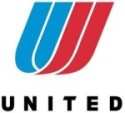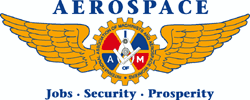Pilots, Machinists, Weigh In On The Plan
 Pilots and machinists working for
United and Continental Airlines have both weighed in on the
proposed merger of the two companies announced on Sunday. The
pilots are cautiously optimistic, while the machinists warn of
potential obstacles to the marriage.
Pilots and machinists working for
United and Continental Airlines have both weighed in on the
proposed merger of the two companies announced on Sunday. The
pilots are cautiously optimistic, while the machinists warn of
potential obstacles to the marriage.
In a statement released jointly on Monday by Wendy Morse,
Chairman, United Master Executive Council, and Captain Jay Pierce,
Chairman, Continental Master Executive Council Air Line Pilots
Association, International, the two pilots unions said integrations
of two airlines such as was announced by the two legacy carriers
Sunday is always challenging. "The support of the pilots is pivotal
in determining whether a merger is successful or not, as will be
the case with this merger of Continental and United," they said.
"While there is potential for this transaction to create a truly
great airline, there are also risks involved. The entity being
created must be stronger and more viable than the independent
entities that are being merged. The futures of our pilots must also
be more secure going forward -- both in our careers and in
retirement. We have sacrificed too much through years of
concessions, furloughs, pension freezes and terminations to accept
unwarranted risk, and any risk requires reward."
 "The pilots who fly for Continental and United are prepared to
stand shoulder to shoulder to support the creation of a viable,
profitable merged company," the statement continued. "The
importance of a fair and equitable seniority integration between
the two pilot groups and a businesslike commitment to achieving
commensurate value for pilots through the prompt negotiation, among
other things, of a new joint collective bargaining agreement is
recognized by all parties as central to a successful airline
merger. We are also prepared to stand shoulder to shoulder in
opposition of this transaction should these ideals and concepts not
immediately be fostered by the new management team. Both the United
and Continental pilot groups understand what can be achieved by
working together; and, in concert with the new management team,
under these conditions welcome the opportunities and expected
rewards of building a winning combination."
"The pilots who fly for Continental and United are prepared to
stand shoulder to shoulder to support the creation of a viable,
profitable merged company," the statement continued. "The
importance of a fair and equitable seniority integration between
the two pilot groups and a businesslike commitment to achieving
commensurate value for pilots through the prompt negotiation, among
other things, of a new joint collective bargaining agreement is
recognized by all parties as central to a successful airline
merger. We are also prepared to stand shoulder to shoulder in
opposition of this transaction should these ideals and concepts not
immediately be fostered by the new management team. Both the United
and Continental pilot groups understand what can be achieved by
working together; and, in concert with the new management team,
under these conditions welcome the opportunities and expected
rewards of building a winning combination."
 International Association of
Machinists and Aerospace Workers' (IAM) General Vice President
Robert Roach, Jr. offered a similar, if somewhat less supportive,
assessment in a statement released Monday. "A Continental/United
combination must have what many past mergers failed to achieve:
broad employee support," he said. "The Machinists will work closely
with members of Congress and the Departments of Transportation and
Justice to ensure that if a merger is approved, it will not be at
the expense of workers at either carrier.
International Association of
Machinists and Aerospace Workers' (IAM) General Vice President
Robert Roach, Jr. offered a similar, if somewhat less supportive,
assessment in a statement released Monday. "A Continental/United
combination must have what many past mergers failed to achieve:
broad employee support," he said. "The Machinists will work closely
with members of Congress and the Departments of Transportation and
Justice to ensure that if a merger is approved, it will not be at
the expense of workers at either carrier.
"The IAM's Transportation Merger Team has been evaluating a
possible United-Continental pairing since United Airlines exited
bankruptcy in 2006. Our concerns include the impact of such a
merger on the pensions, benefits, seniority and job security of
employees at both carriers. We are concerned about the
survivability of the combined airline and the merger's effects on
passengers and the cities the airlines serve. As this process moves
forward, these issues must be addressed to our members'
satisfaction," Roach continued.
The machinists union president said that, with more than 26,000
Machinists Union members at both carriers, one way to avoid some of
the mistakes of past airline mergers is to include the IAM very
early in the process.
The IAM represents 16,000 United Airlines Ramp, Stores, Public
Contact, Fleet Technical Instructor, Maintenance Instructor,
Security Guard and Food Service employees, and another 76 employees
at United's frequent-flyer program, Mileage Plus, Inc. The IAM also
represents Continental Airlines' 9,500 Flight Attendants, 250
Flight Attendants at Continental's wholly-owned subsidiary
Continental Micronesia and 1,200 Flight Attendants at Continental
and United regional partner ExpressJet Airlines.
 ANN's Daily Aero-Term (12.01.25): Convective SIGMET
ANN's Daily Aero-Term (12.01.25): Convective SIGMET ANN's Daily Aero-Linx (12.01.25)
ANN's Daily Aero-Linx (12.01.25) NTSB Final Report: Remos Aircraft GmbH Remos GX
NTSB Final Report: Remos Aircraft GmbH Remos GX Aero-News: Quote of the Day (12.02.25)
Aero-News: Quote of the Day (12.02.25) ANN's Daily Aero-Term (12.02.25): Coupled Approach
ANN's Daily Aero-Term (12.02.25): Coupled Approach





